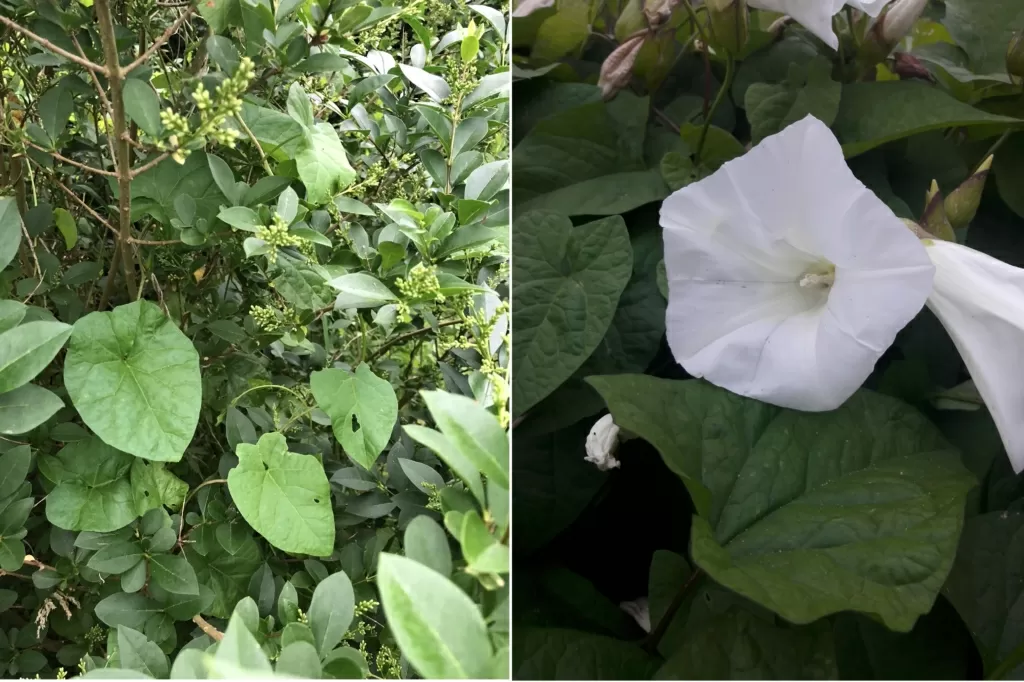Convulvulus arvensis Commonly Known as Bindweed
Convulvulus arvensis (bindweed)
Convulvulus arvensis is another very invasive plant which appears in the Spring and quickly spreads. It is commonly mistaken for Japanese Knotweed due to its heart shaped leaves.
Distinguishing Between Convulvulus arvensis & Japanese Knotweed
However, somethings to notice which are different to Japanese Knotweed is that it flowers in early summer. Alongside this, they are trumpet-shaped. Whereas Japanese Knotweed flowers are in small clusters and flower in later summer.
Bindweed is known for its climbing nature. In fact, can sometimes be found inter woven with other plants. Whereas Japanese knotweed stands are strong and stand tall.

Interesting Facts About Convulvulus arvensis
- Although considered troublesome, bindweed provides pollen for bees.
- As well as this, the leaves are a food source for the larvae of convolvulus hawk moths.
- It is not easy to remove as they grow from a perennial root system.
- The roots are usually white and brittle.
- The roots can regenerate from only a tiny fragment.
- Bindweed Seeds can remain viable in the soil for several years.
The Damage Control For Convulvulus arvensis
The methods of treatment for Convulvulus arvensis can be both digging and systematic weedkiller containing glyphosate.
Digging
To dig your convulvulus arvensis, you will need to spade up any seedlings as they appear; removing as much as the root as possible. However, this will need to continue for several of the growing seasons to fully eradicate the weed.
Once you have dug up the roots, make sure to either burn or send the waste to your local council’s green waste collection. This is because your own home compost will unlikely be hot enough to kill the roots.
Weedkiller
A systematic weedkiller should be applied to the leaves and absorbed into the plant. However, make sure to avoid spraying this on your surrounding plants.
